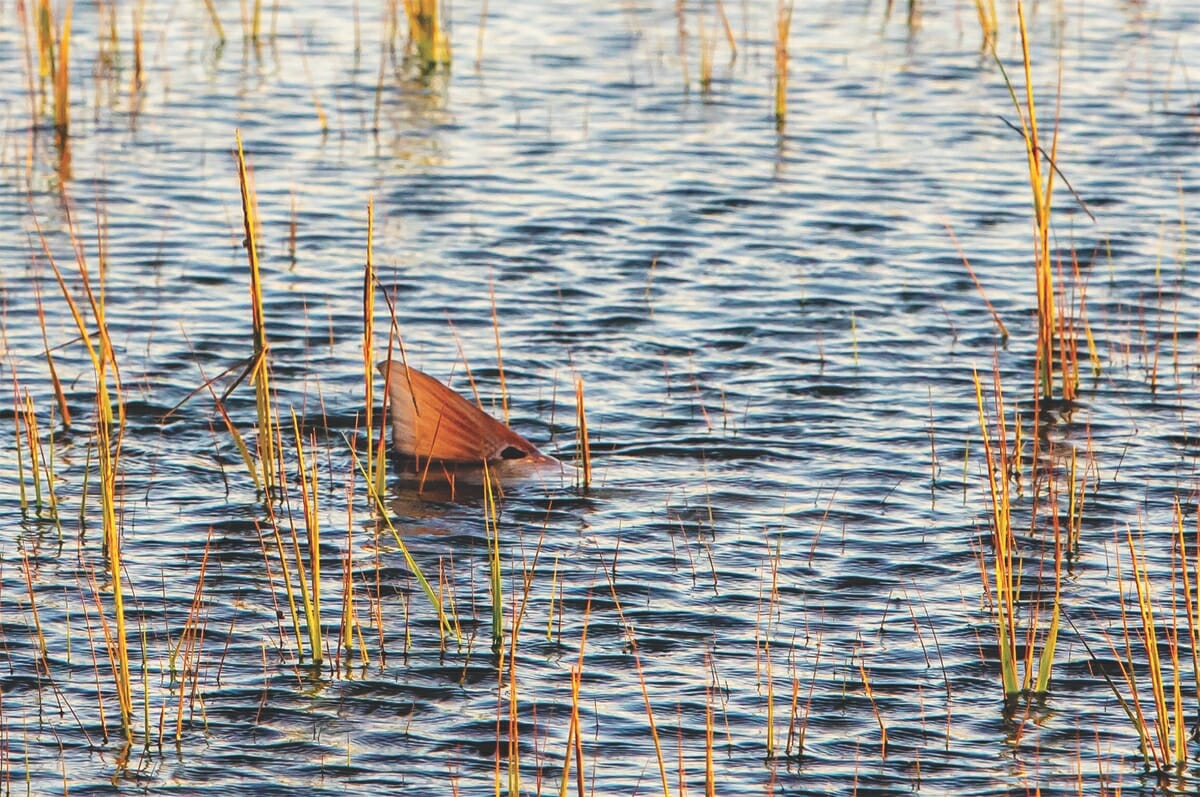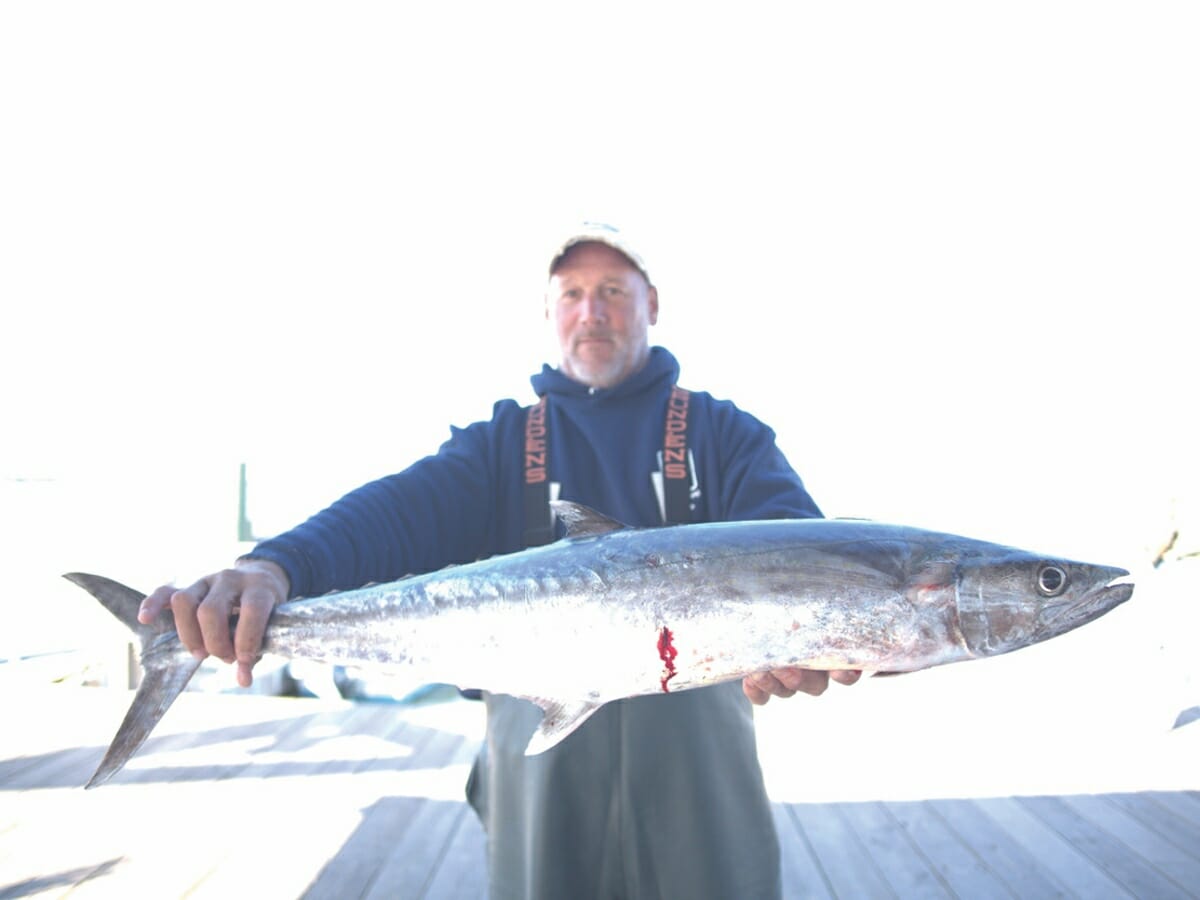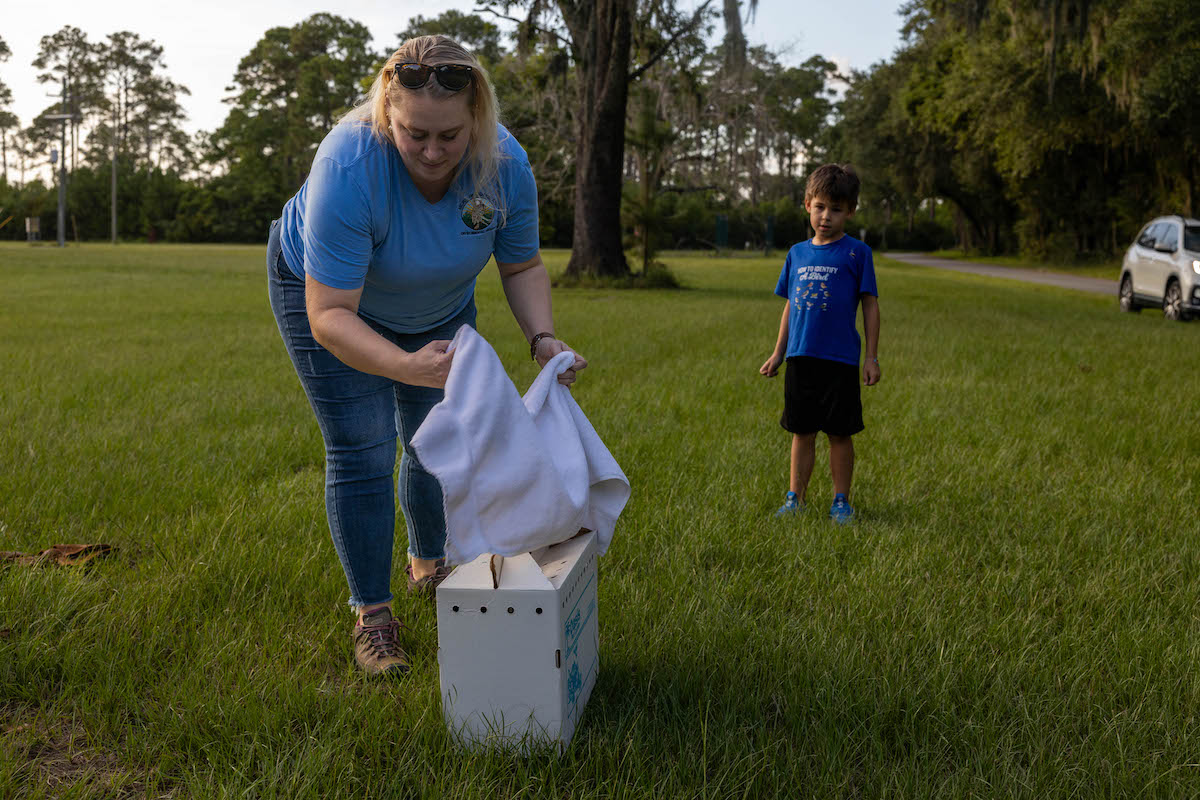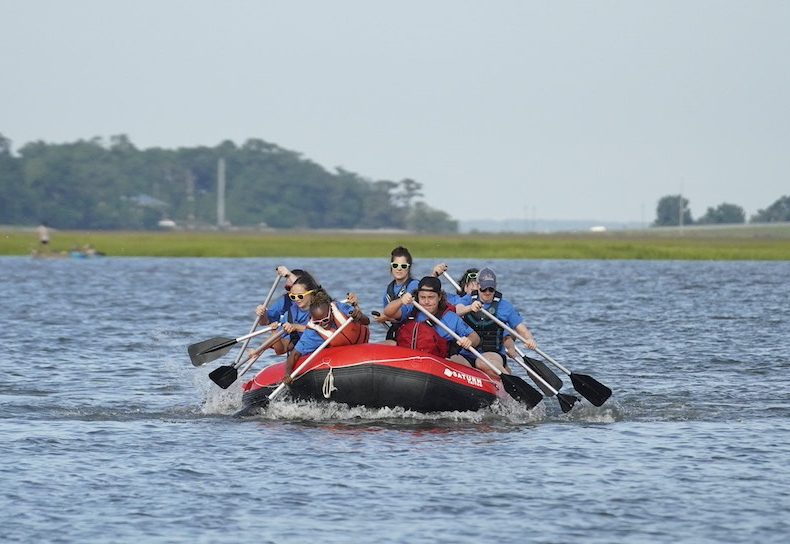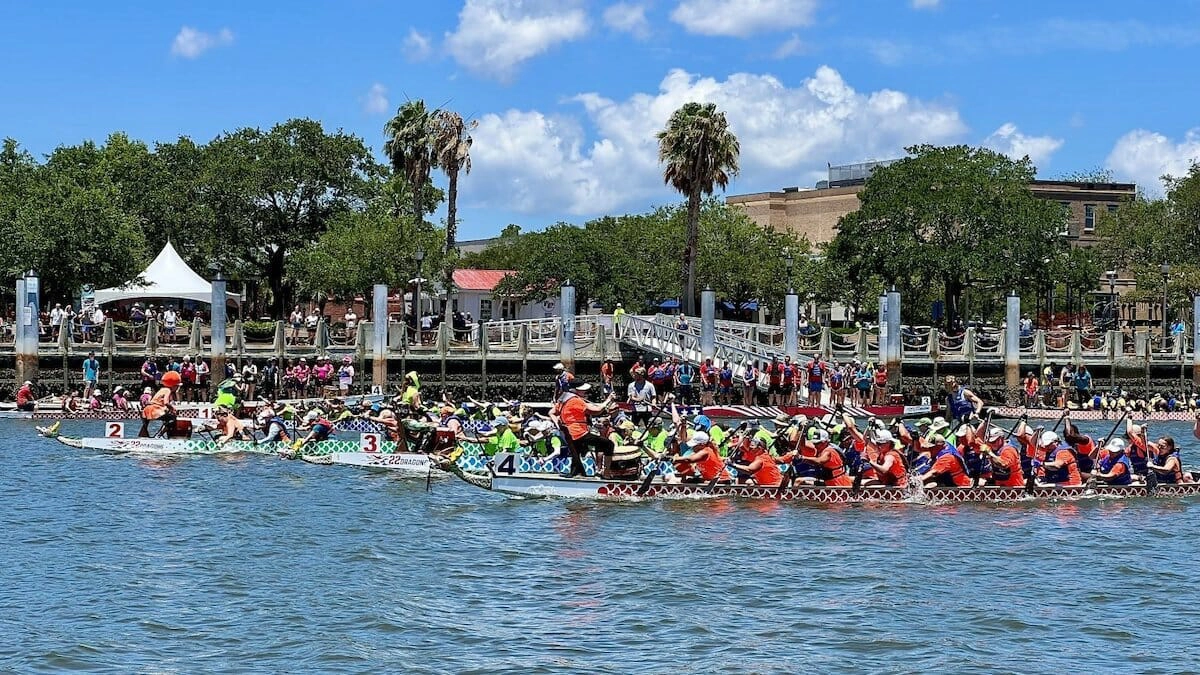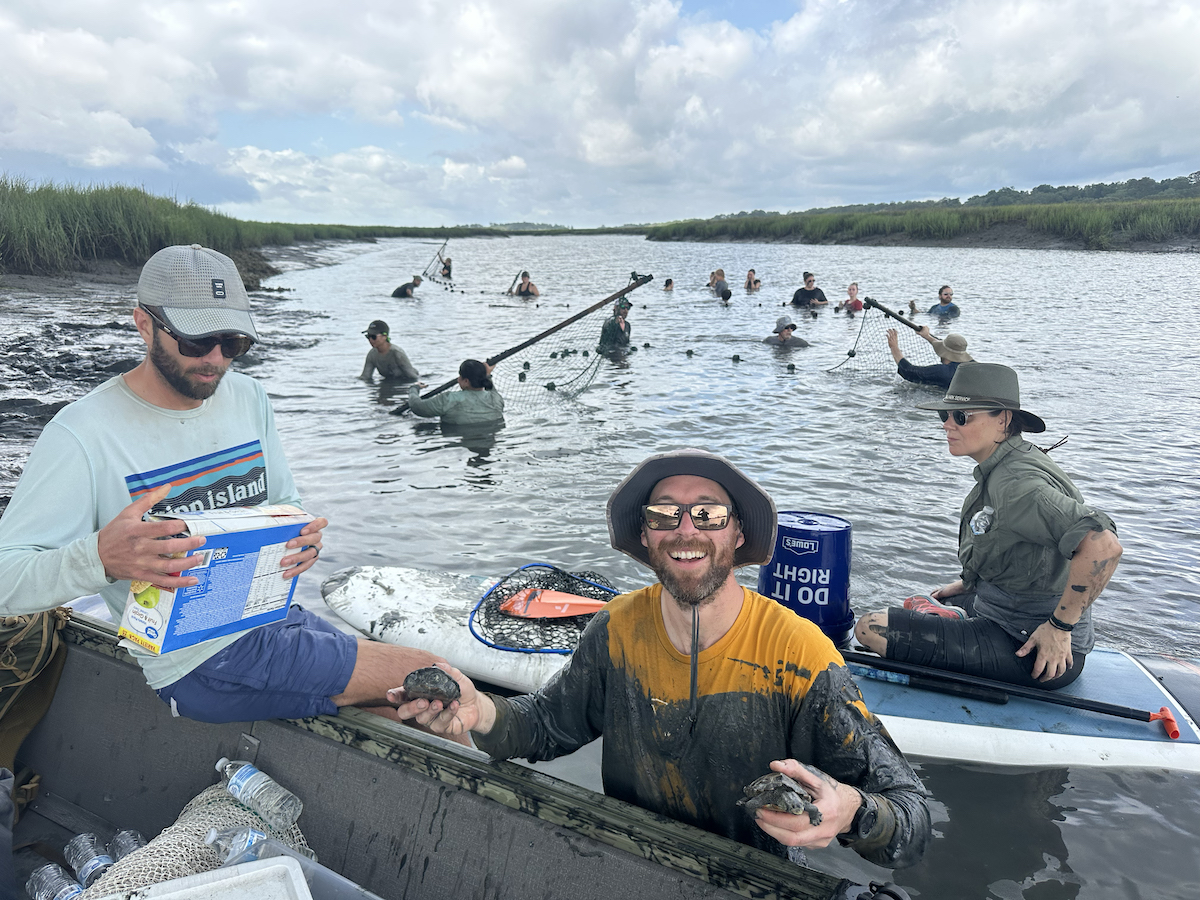October is an excellent time for fly fishing some of the spring tides. If you are new to the Lowcountry you may have heard the term “a spring tide” and assumed it occurs seasonally. Actually, spring tides occur every month for several days around each full moon and new moon. That’s when the high tides are higher and the lows are lower. Except for some of the extreme cases, these tides often create special fly fishing opportunities: sight casting for tailing redfish.
But that’s more like the end of the story. Let’s back up and see just where, when and why in the world redfish occasionally want to stick their little tails plumb up out of the water and sometimes even vigorously wave them back and forth, noisily sloshing water all around as though beckoning any nearby predator. And this is only done by certain reds, and they only do it at certain times. And it doesn’t happen just anywhere, but only in certain types of marsh. If you think that’s a rather oddball thing for a fish to do, I did too the first time I saw it some forty years ago. “Doggone,” I thought. “Better look into this.”
With just a casual glance all the marsh looks pretty much the same. I mean, there’s a lot of grass, a lot of mud at low tide, lots of water at high tide and miles of channels among the hummocks and islands. Many of these waterways are deep enough for a shallow draft boat at low tide, so let’s take a virtual fishing trip during one six-hour tide change, from low water to high, and find out a little more about what’s going on.
It’s first light and we’ve quietly brought our boat to a stop in a small channel along the edge of a low tide flat, a broad expanse of bare mud appearing essentially flat but actually rising ever so subtly in the direction away from the water and toward the land. The tree line is about a half mile distant.
As the light comes on we see there’s a lot more to it. Across the flat we see mounds of oyster beds forming a barrier-like line. Directly behind the oysters we see rather tall, thick-bladed marsh grass. This grass grows in the soft mud. In many, maybe even most areas this tall, thick grass and soft mud extend from the oyster beds all the way back to land.
But not here. Here is different. Here is special. Here is redfish Nirvana because beyond this tall grass we see a very large area of shorter, finer grass all the way to the line of oaks at high ground. This grass grows in firmer, sandier soil and that is where tons of fiddler crabs live. And this short grass area only floods on spring tides. We’re looking at a “Goldilocks” high tide flat. Here, when the high tide is not too much and not too little, but when it’s just right, more or less knee deep, redfish will do just about anything, including pirouettes on their noses to eat a bunch of fiddler crabs. As the tide comes in over this short grass flat the reds will come with it. So will we.
The tide starts in. As it covers the low tide mud flat we see schools of reds cruising for shrimp and baitfish. As the water gets deeper the schools often break out into smaller groups and prowl around the oyster beds and along the tall grass edge. We may see flashes of sunlight reflected off their sides as they twist and turn. As we pole through the tall grass we notice that the bird life which began with the big wading birds on the mud flat is changing to the redwing black birds and the more secretive green herons and clapper rails and, in my experience, the much less common little black rails. We’re just going with the flow. We’re caravanning with the reds to their fiddler’s picnic.
We expect to find juvenile reds on the short grass high tide flats, about twenty to thirty inches and up to maybe ten pounds. The yearlings are more secure in schools around the cover of deeper structure and most of the adults have gone to the spawning grounds and typically stayed offshore. Reasonable expectations are about three to five pound fish.
About four hours into the flood there’s enough water for the reds to start hunting. There’s enough for us to do the same. We quietly pole the boat into position and just watch for a while. It’s about two hours until high water. We’ll have a three to four hour window, about two hours either side of high. We’re looking for singles. As they come up onto the shallow, high tide flat they usually spread out. Comparing this scene to when we started, about six acres of water is turning into about six hundred acres in about six hours. The sun is bright. The wind is light. A fine day even if the reds don’t cooperate.
But they will. Optimism springs eternal in the souls of fly fishers.
Redfish have a severe overbite with thick, tough lips. They have three powerful constrictor muscles in their throats with bone-like ribbing. They half swallow their prey and then crush it. They can crush any crab they can get their mouths around, even a stone crab, but they consider the little fiddler crabs a special delicacy.
When a fiddler senses one of these crab eating machines has come into its domain, the music stops. The crab starts digging to China. The red will plant its mouth over the burrow and start twisting, turning and digging, trying to suck the crab out of the sand, head down and tail up, vigorously waving that broad tail for better traction: a tailing redfish. Sometimes you hear it before you see it, like someone just turned on a washing machine.
We quietly pole the boat within range and cast a crab-like pattern a little beyond the fish, and then let it sink and strip it back in short, fiddler crab crawly motions close enough for the red to see it in all the commotion and cloudy water he’s stirred up. It doesn’t always work. If we see a few, manage to cast to half of them and catch and release one or two we’ve done well.
Good luck. And I hope you’ll send me a picture of your next tailing redfish.
Tight lines,
Dave Murray
Dave Murray helped pioneer salt water fly fishing in the Lowcountry. He is a retired Orvis endorsed guide and currently teaches fly fishing schools and fly casting clinics with Orvis and Bay Street Outfitters. He lives in Beaufort with his wife, Terry. He can be reached at davemurray1033@gmail.com
Tailing redfish. Photo courtesy of Tuck Scott.


